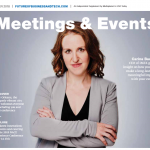Immersive Experiences Drive 2019 Event Trends
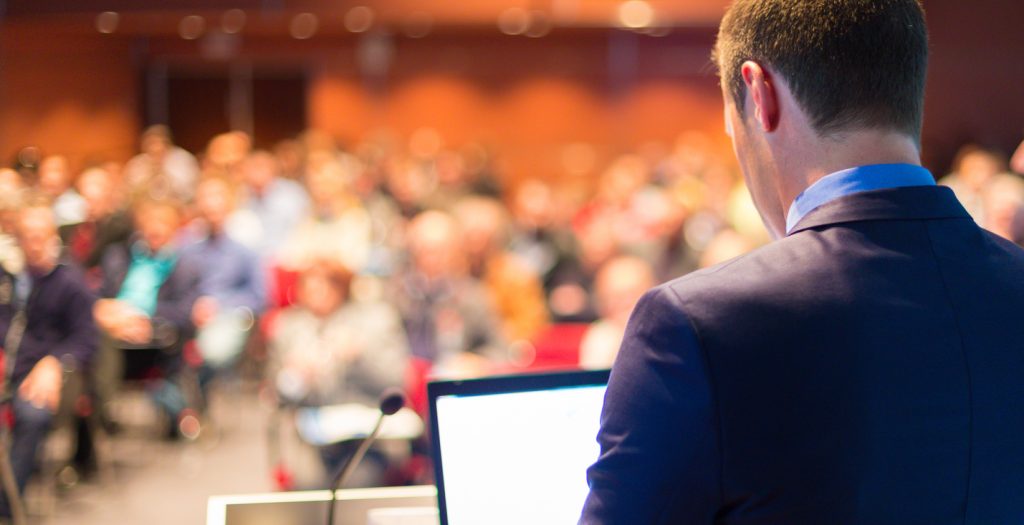 2019 is the year of the Millennials. Two decades into their namesake millennium, members of Generation Y will finally outnumber Baby Boomers as the largest living generation in the United States.
2019 is the year of the Millennials. Two decades into their namesake millennium, members of Generation Y will finally outnumber Baby Boomers as the largest living generation in the United States.
Millennials place a premium on experience over possessions and owning “stuff.” This gives event planners a perfect opportunity over stuff-based industries like retail to drive purchases from Millennials. The only catch is event planners need to deliver incredible experiences—experiences that will captivate and engage audiences from the moment they walk through the door.
Planners have been working to make immersive events for a long time, but this year it will be paramount. With that in mind, here are four AV tools that will make your events truly engaging:
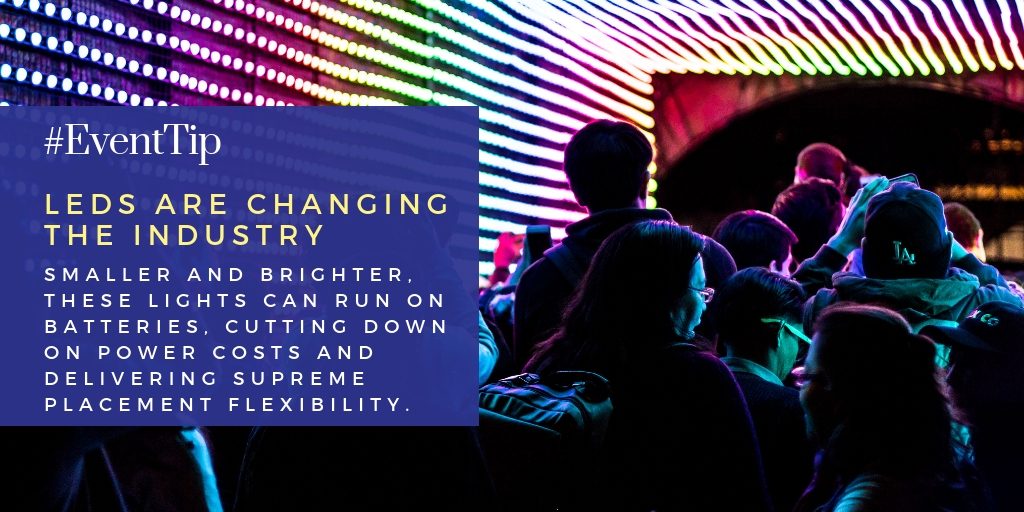 LED Lighting
LED Lighting
Lighting is one of the most foundational aspects of an event. It creates the mood, directs audience focus, facilitates filming and provides general visibility. Event and stage lighting used to require bulky, power-hungry hot lamps; however, the latest LED lighting systems are changing all that. Smaller and brighter, these ultra-efficient lights can run on batteries, cutting down on power costs and delivering supreme placement flexibility.
“The advent of LEDs is changing the industry,” said Eric Newkirk, vice president of design and creative at EPN member CEAVCO Audio Visual. “With battery-operated LED lights, we can light a space without cabling and without a power burden and the labor associated with it.”
The lack of unsightly cables running across the floor helps create a seamless event space and delivers a more enjoyable experience for attendees.
Unlike traditional light sources, LEDs are programmable, so they can change colors or shapes during an event as needed. This makes changing the room between sessions as easy as flipping a switch and makes for a dynamic event.
LED Walls
LED walls are modular, made up of individual displays that connect to form a single large screen. Highly customizable and offering flexible design options, LED walls have many benefits compared to traditional projectors.
“You can make LED walls into any size or shape you want—circles, squares, curved walls—any kind of wall is possible,” said Johnny Jan, director of creative services and marketing at EPN member, CPR Multimedia Solutions. “For event planners, this gives a better avenue to think about staging: The LED wall can be a part of the set design, or even wrapping around pillars. Planners can even use LED walls as the curtain on stage, raising and lowering the displays as needed for the event. LEDs provide a very immersive experience.”
Besides the variety of shapes and sizes LED walls can take, they also offer crisper and brighter images and take up less space in the venue than projector/screen systems do. By their nature, projectors have a large footprint and require unimpeded space to anything passing in front of the projector.
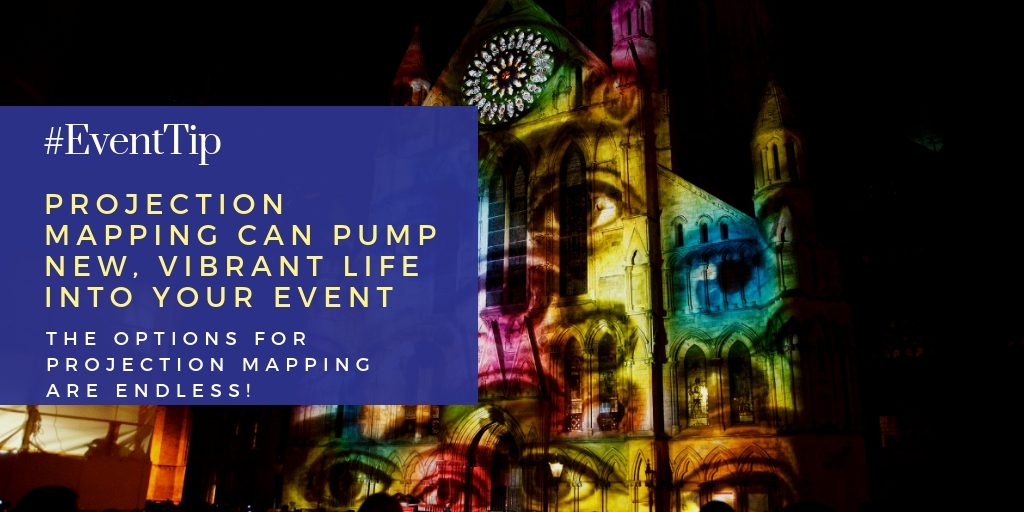 Projection Mapping
Projection Mapping
Remember a couple years ago when the world went Pokémon crazy? As part of the game, people collected the cartoon characters on their phones using an early form of augmented reality (AR). Projection mapping for events is a large-scale version of AR technology that can instill the same excitement among audiences and keep them on the edge of their seats.
While it used to be limited to flat surfaces (e.g. screens, walls), modern tech allows for three-dimensional objects of any size to become the canvas. The human eye is naturally attracted to light and movement, so projection mapping onto something in your event space is an effective way to draw eyes where you want them.
No matter what your space includes, projection mapping can pump new, vibrant life into it. The options are endless, from upgrading a traditional pipe-and-drape booth or background with interesting designs to highlighting sponsors with large logos on the walls.
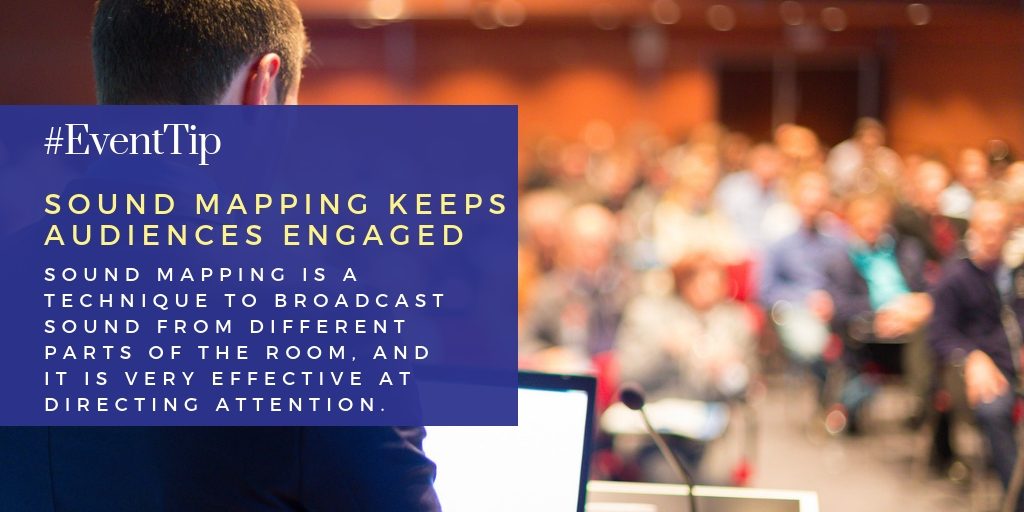 Sound Mapping
Sound Mapping
When we hear something, we instinctively turn and look in the direction of the sound. In a visually cluttered environment, sometimes it’s easiest to get your attendees’ attention through their ears. Sound mapping is a technique to broadcast sound from different parts of the room, and it is very effective at directing attention.
For example, if your speaker is making a dramatic entrance and starts talking from the back of the room as he walks to the stage, it would make no sense for the audio to come from the empty stage. Instead, through sound mapping, the audio could follow the speaker as he walks across the room.
Like the surround sound system in a movie theater, sound mapping keeps audiences engaged.
With all the distractions present at an event, it’s harder than ever to capture and keep your audience’s attention. With these tools at your disposal, your attendees will be so immersed in the event, the only time they’ll reach for their phones will be to create Instagram posts about your awesome event.
Comprising 24 of the AV industry’s premier live event staging companies, EPN members are consistently chosen by event planners and producers when they need events that wow.
Representing 27 major markets across the United States and Mexico, EPN has you covered, no matter where you are. Find your local AV partner here.


